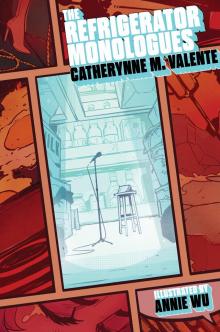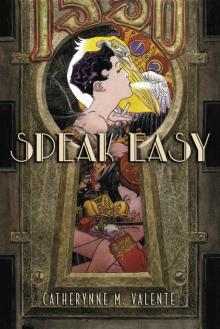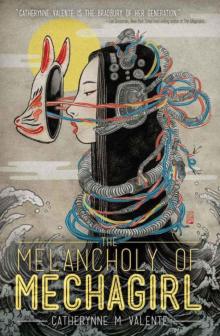


Inquisition
Green, Toby
The Casa da Guiné where Duarte de Leão worked was located on the waterfront, near the Mina stores, which were piled high with North African cloths, carpets, copper saucepans, trays and rosaries made of glass which would be taken to Africa to trade for gold and slaves.13 Just round the corner was the slave house.14 It was here that the Africans who had recently arrived on slave ships were kept in two large rooms and fed a daily ration of rice, biscuit and olive oil as they waited to be auctioned off.15 If they died in the slave house their bodies were carried to a pit by St Catherine’s Gate and dumped there in a mass grave. This was a harsh fate, but better than being left to rot where they had fallen, which had been the practice until 1515.16
In contrast to the manacled slaves were the many Africans to be found nearby at the docks, working as stevedores handling the sacks of charcoal and straw which were brought to the city, the charcoal being used for fires and the straw for bedding, floors and stables.17 African women, meanwhile, tended to be found elsewhere in the city, working as water carriers or washerwomen. Some of them sold rice pudding, couscous and chickpeas in the squares and by the dockside from pots which they carried on their heads; but the less fortunate cleared rubbish and excrement from the wealthier homes of the city, carrying away the excrement in canastras, wicker baskets with lids concealing basins inside.18
Luis spent three months in Lisbon. At this time there were relatively few Africans living in the remote towns of Portugal’s interior which he knew, places such as Mogadouro, so this was his introduction to the people and customs that he would meet in Cape Verde.19 Duarte had big plans for his young nephew, for once Luis had arrived in Ribeira Grande he would be trained up by his uncle so that later he could be installed as treasurer and accountant.20 First, however, Luis had to experience at first hand the reality of slavery in order to see how the business operated.
By the 1540s, the slave trade was already a moral circle constantly in the process of being squared. Ships sailed from the Cape Verde Islands to the coast of Senegal with horses; they sold the horses to the Serer people of the coast and returned with slaves in the very same ships, the first step in the process whereby humans became equated with animals.21 From Cape Verde the ships sailed to America or Lisbon, where the slaves were met by people like Luis, who quickly learnt how to continue the process of degradation. Under his uncle’s tutelage the young Luis learnt to log the slaves and check their health before registering them for sale, accompanying the administrators out to the ships to examine teeth and limbs and forcing the slaves to perform physical exercises, noting down any deformities or unusual markings so that the slaves could be identified.22
Such dehumanizing on arrival set the tone for much of the African experience in Portugal. In 1576 the Inquisition would receive a denunciation from Domingos Gomez, a black resident of Lisbon, of two of his fellows, Fernão Callado and Antonio Rodrigues. Gomez had seen them both naked with Callado carrying a cross on his back and Rodrigues whipping it.23 Slavery created abuses which human beings might redirect through new outbursts of aggression, and such an atmosphere would not be irrelevant to the world of Luis.
With the inquisitorial cloud hanging over his uncles and the death of his father, fear was a condition of this child’s existence. In Lisbon Luis learnt to see how this condition might be transferred to others. This was a process of some urgency, for Luis’s relatives knew that for decades the people they lived among had received psychological conditioning for unleashing persecution on conversos like them.
FOR DUARTE DE LEÃO, his status in the Casa da Guiné offered a breathing space. Moreover, for conversos such as Leão and his nephew Luis a whole new continent of possibilities had been opened up by Columbus. Threatened by the Inquisition in a place they had called home for centuries, many conversos felt they had no option but to flee into the unknown.
Columbus’s first voyage to the New World had in fact involved at least five conversos.24 One of them, Rodrigo de Triana, had been the first sailor to spy land, and another, Luis de Torres, the first to set foot in America.25 The emerald waters of the Caribbean were soon cluttered with Spanish ships bringing settlers, seedlings, livestock. The rich equatorial earth smelled of even more life, and death, than usual. Tempers frayed; scapegoats were needed. As early as 1506 the bishop of Puerto Rico complained that ‘Hebrew’ merchants were flooding the island.26 The complaint was repeated by his counterpart in Cuba in 1510, and by then the proctors of the Spanish colonists were complaining that Jewish teachings were corrupting the natives.27 Certainly, the name of the main port of Cuba might have given rise to suspicion, as the three consonants of Habana, if transliterated into Hebrew, produced – Ha B’Nei – the tribe.
This converso diaspora was rapidly to encompass the whole world. The Inquisition and forced conversions created dangers in Iberia, but there were other places in which to seek sanctuary. Looking to the east, there were many conversos in Goa, Ceylon and India by 1520.28 In America the story was the same. By around 1550 roughly one in five of the European population of Mexico City was converso.29 By 1570 there was twice the proportion of conversos to Old Christians in Peru as there was in Spain,30 and they were so numerous in Brazil that they occupied many of the official posts in spite of royal prohibitions.31 One converso from the important Aboab family,32 Francisco de Vitoria, was even made the first bishop of Tucumán in Argentina in 1581,33 and they were generally well represented in the Spanish American Church,34 making a mockery of the supposed heresy for which they had been persecuted in Portugal and Spain.
It is tempting to see this converso flight across the Atlantic as a romantic escape, but this was a brutal episode in history. In the Caribbean the military force which had accomplished the reconquest of Spain and the installation of the Inquisition was now directed at a new target: the Amerindians. Caribbean women were routinely raped by overseers while their husbands dug for gold in the mines. Newborn children were stripped from their mothers’ arms and smashed against rocks or thrown to be eaten by dogs. Men tied hand and foot lay under the beds on which Spaniards slept with their wives. The hands, noses, tongues and breasts of the Amerindians were frequently mutilated or simply hacked off.35
One of the major currents running through history is fear, something about which historical documents – and historians – tend to remain silent, since few people are brave enough to write about their fears. Yet persecutions tend to arise from a constellation of different currents of fear. Conversos had been subjected to the Inquisition and forced conversion; in the New World the dangers which faced them in Iberia might be transferred to others. As ‘whites’ in an environment where persecution was becoming racially directed they could be emancipated. While it is disturbing that this was a condition of the lessening of their persecution, it is only human that they should have escaped to a place where there were readier targets than they for aggression;36 possibly more disquieting is the realization that both the aggression channelled through the Inquisition and the sudden expansion of empire to America were two sides of the same coin.
For Portuguese conversos such as Duarte de Leão and his young nephew, these undercurrents shaped their behaviour. The adventures of Luis de Carvajal would be paradigmatic of the sorts of extraordinary escape which many conversos managed to carry off in these years. With the army of heretics which the authorities believed to be at large in Portugal and the Inquisition only recently installed, it was difficult to imagine the persecuting institution being exported to somewhere as remote as Cape Verde.
Surely everything was in their favour. Duarte de Leão, with his control over many of the administrative posts in Ribeira Grande, could try to ensure that rabble-rousers were kept away, while Luis could at last begin to rebuild his life, his childhood. Here he would be free from persecution, and could grow up in an atmosphere of some security. Fear no longer needed to be the first reflex. This, at any rate, was the plan.
A closer look, however, might have disabused Luis of his sense of safety. The harbour of R
ibeira Grande was narrow, guarded by rocks to the east. On a clear day the anchorages revealed the summit of Fogo, the neighbouring island, an active volcanic cone sitting like a fiery medieval God, judging his wayward flock. At times the clouds of ash drifting from Fogo across the ocean concealed the brilliant tropical sun, intimating in their fire and darkness the sadness of what was to follow.
CAPE VERDE IN 1548 was at the peak of its wealth.37 There were 500 households in Ribeira Grande, with many of the homes built of stone and whitewashed in Portuguese style.38 With the continuing settlement of the New World, the demand for slaves was growing all the time and most of the ships came to Cape Verde. Of the 252 ships which legally exported slaves across the Atlantic between 1544 and 1550, 247 went to the Cape Verde Islands.39 The slaves were brought down from the cool highlands of Santiago, where they had been taught the rudiments of Christianity in the villas of their rich owners,40 and sold from the stone pillory in the main square of Ribeira Grande. Free blacks rowed the unfortunates out to sea and the ocean-going prisons that awaited them; here the women were often put on deck and the men in the hold, so that the women did not goad the men into rebellion.41
Such a history is difficult to imagine today. Ribeira Grande is known as Cidade Velha – the old city – and is a sleepy village of beach bars and sandy streets drifting up towards the rocky valley. The river which brought the settlement here in the first place has dried up, but the valley retains sweeps of green beneath the ochre desert above. The cathedral stands in ruins, pored over by archaeologists from the nearby modern capital, Praia. But the slave pillory remains in the oblique square by the beach, a reminder of what went before and a memento of the world that Luis knew.
Luis’s experiences in Lisbon had prepared him for some of what he saw when he arrived at Ribeira Grande. Yet whereas Africans in Lisbon were but a sizeable minority, in Cape Verde it was Europeans who were few and far between. Most people had adopted African customs, and the Portuguese settlers married African women by preference.42 Some sent slaves away from the city, inland along the valley whose sides were covered with groves of orange, lime, lemon and fig trees.43 The slaves made for the bone-dry plateau that rose up towards the mountains and their collars of cloud. Here they caught monkeys, who were taught how to dance and perform tricks. Said the Italian Carletti, ‘I have seen some of [the monkeys] learn to stay on a corner of the table at which people eat, each with a candle in its hand, giving light to the people eating and showing a certain extraordinary shrewdness in not letting drops fall on the table’.44
As in Lisbon, Luis’s role in Ribeira Grande revolved around the slave trade. As he became older, he took on greater responsibilities. The houses of the so-called factory were near the pillory on the square. There, once he had learned to be accountant and royal treasurer, it was Luis’s task to charge the appropriate taxes to merchants taking slaves across the Atlantic. Luis and the ships’ captains signed a joint declaration as to the numbers of slaves being shipped and their origins: whether they had come straight from the African mainland, been purchased by the factory itself for the king of Portugal or come from the interior of Santiago.45
Once the slaves had been bought, they were kept in two rooms, one for the men and one for the women.
Many of the males showed a certain delicacy of their own, tying up the member with a ribbon or other grassy threads and pulling it back between their thighs, thus concealing it so that one could not tell whether they were males or females. And others covered it up by putting it into the horn of some animal or a seashell. Still others so filled it with rings of bone or of woven grass that it was both covered and decorated. And others painted it or, to say it better, daubed it with some mixture so as to make it red or yellow or green.46
Though Luis had been sent thousands of miles from home for a better life, he was not alone. Another uncle of his, Francisco Jorge – like Álvaro and Jorge de Leão a brother of Duarte de Leão and of Luis’s mother Catalina – had taken the same option. Francisco Jorge was the factor on the African mainland and had a house in the settlement of Buguendo on the River São Domingos (in the modern country of Guinea-Bissau).47 Here Jorge traded with the African peoples for slaves, who were then shipped over to Santiago to be exported to the New World. Other relatives of Luis and Jorge were also brought over to Africa through Leão, so that the family as a whole could benefit from the new opportunity.48 For this close-knit group from a distant corner of the Portuguese hills, west Africa had become a refuge from the Inquisition.
Buguendo and Cape Verde may have seemed remote, but already the Inquisition was beginning to export its idea of persecution. In 1546, two years before Luis’s arrival in Cape Verde, complaints had reached Portugal urging the installation of a tribunal in this outpost of the empire. Members of the elite in Santiago had written to the Inquisition in Évora claiming ‘the Holy Inquisition has so much to do in this little corner of earth that it would be immoral to delay installing it’.49 They denounced the customs house in Ribeira Grande as a hotbed of heretics, claiming that its officials had granted safe passage to a fugitive from the Inquisition whose father and brother had been burnt in Lisbon. When things had got too hot for the refugee in Ribeira Grande, the officials had sent him to the African coast for safety.50 What was worse, they said, was that for as long as twenty years up to 200 conversos had been living on the African coast, performing the Mosaic rites and also the religious rituals of the cultures of Guiné.51
Five years later the Portuguese Inquisition finally took note of the complaints. In 1551 the Tribunal of Lisbon was extended to cover Portugal’s Atlantic colonies, taking responsibility for the islands of the Azores, Madeira, Cape Verde and São Tomé, for Angola and Guiné on the African mainland, and for Brazil.52 The decree reveals the inquisitorial turn of mind in its coming-of-age. The fully fledged Portuguese Inquisition was still just four years’ old and the fact that an office on Lisbon’s Rossio was seen as the best place to oversee the religious belief of colonies in Africa and America shows just how rampant the fantasies of control had become.
Nonetheless, the decree had immediate effects in Cape Verde. The inquisitors nominated a visitor to investigate the conversos on the islands that same year.53 In the 150 years that followed the Inquisition would never be entirely absent. By 1700 a total of 442 denunciations had been sent from the two main Cape Verdean islands of Santiago and Fogo.54 This works out at roughly three per year, which in such a remote place where the population did not exceed 10,000 (of whom at most around 800 were ever European)55 shows how enduring and pervasive the Inquisition became. Even these desolate specks of rock in the Atlantic – so remote that as João Rodriguez Freire, one of the accused, put it in 1629, they ‘are not even found on mapa mundi’56 – were not passed over. And even if the Inquisition could not actually bring home the heretics from Africa, it kept a watchful eye. As late as 1672 the inquisitor-general sent officials to wait at the port of Lisbon for two men from Cape Verde known to inquisitors, who were seized before they could land and thrown into the inquisitorial jail.57
THE SPREAD OF the Inquisition to the Cape Verde islands in the 1550s was not a first for Iberian colonies. A few decades earlier the well-known presence of conversos in the New World had led to some forays by the Inquisition as early as the 1520s into the highlands of Mexico. Here, two converso conquistadors, Hernando de Alonso and Gonzalo de Morales, had been burnt at the stake in Mexico City in 1528, the first victims of the Inquisition in America.58
It may seem strange that representatives of inquisitorial authority should have given so much thought to the actions of conversos in Mexico at this time. Vicious factional power struggles were convulsing the conquistadors and the Amerindian population was dying in the mines. But the moral justification of the conquest was religious, and thus preserving the purity of the faith was essential.
In Mexico persecution had spread rapidly from the conversos to the Amerindians. By 1530 cases were being mounted against Amerindians in Mexico for
worshipping idols, killing hens every twenty days and spraying their blood in the fire, and permitting marriages according to pre-Hispanic rites.59 This process culminated in a trial presided over by the episcopal inquisitor bishop Juan de Zumárraga of Mexico against Don Carlos Chichimecatecuhtli, the chief of Texcoco, an important town near Mexico City. Chichimecatecuhtli was tried and burnt in 1539 for promoting local religions;60 however, of equal relevance was his hostility to the Spanish conquest, as he was reported to have said, ‘I will have you know that my father and my grandfathers were both great prophets and they could see many things in the past and those yet to come and they never said anything about this . . . Who are these people who undo and perturb us, and live off us and break our backs?’61
Chichimecatecuhtli’s burning at the stake was intended as exemplary, but considering the atrocities inflicted on the Amerindians in those years its impact may not have been as severe as all that. Moreover, the local authorities felt that it was an overly harsh way to treat the Indians, whose status was still being decided in Spanish law, and this case eventually led to Zumárraga being stood down as chief inquisitor in 1543.
In spite of Zumárraga’s fate, these events had shown the Portuguese inquisitors how readily the institution could be transferred. With the dispatch of the inquisitorial visitor to the islands in 1551, it became clear that Cape Verde was one of the testing grounds for such a transfer. In these early years the Inquisition was perhaps seen by some as of special relevance because of the islands’ role in the slave trade. Here the authorities followed Aristotle and Thomas Aquinas in asserting that one part of mankind had been set aside by nature to be slaves in the service of masters, and that such slaves depended on their masters to exercise choices for them.62 There were natural slaves and natural masters; the condition of slavery benefited both.














